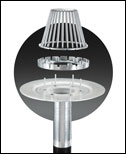OSHA introduces dispute-resolution program
The Occupational Safety and Health Administration (OSHA) has introduced an alternative dispute-resolution pilot program for complaints filed with OSHA's Whistleblower Protection Program. The alternative dispute-resolution program can assist complainants with resolving their disputes in a cooperative and voluntary manner.
The program will be implemented in two OSHA regions and offers two voluntary dispute-resolution methods: early resolution and mediation. When a whistleblower complaint is filed with OSHA in one of the pilot regions, the parties involved will be notified of the alternative dispute-resolution options and may work through an OSHA regional alternative dispute-resolution coordinator to use those methods.
The two OSHA regions participating in the pilot are headquartered in Chicago and San Francisco. The Chicago regional office is responsible for whistleblower investigations filed in Illinois, Indiana, Michigan, Minnesota, Ohio and Wisconsin. The San Francisco regional office is responsible for whistleblower investigations in Arizona, California, Hawaii and Nevada, as well as various Pacific Islands, including American Samoa, Guam and the Commonwealth of the Northern Mariana Islands.
Additionally, OSHA has enhanced its Variances Web page to improve public understanding of the variance approval process and increase access to OSHA's decisions regarding variance requests.
A variance is a regulatory action that permits an employer to deviate from the requirements of an OSHA standard under specified conditions. A variance does not provide an outright exemption from a standard except in cases involving national defense.
The page, available at www.osha.gov/dts/otpca/variances, lists denied and approved requests and provides information for employers regarding submitting formal requests for a variance from an OSHA workplace standard.
Employers can request a variance for several reasons, including not being able to fully comply on time with a new safety or health standard because of a shortage of personnel, materials or equipment.
NIOSH and OSHA release guide in Spanish
The National Institute for Occupational Safety and Health (NIOSH) and Occupational Safety and Health Administration (OSHA) have made available a Spanish-language version of Nail Gun Safety—A Guide for Construction Contractors. The guide is intended to help construction employers and workers prevent work-related nail gun injuries.
Internal and external bodily injuries can result from unintended nail discharge, nails that bounce off a hard surface or miss the work piece and become airborne, and disabling the gun's safety features, among other causes. Roofing contractors can prevent injuries by using full sequential trigger nail guns, establishing nail gun work procedures and providing workers with personal protective equipment.
The Spanish-language version of the guide is available online at www.cdc.gov/spanish/niosh/docs/2011-202_sp. Hard copies also are available by contacting OSHA's publications office at (800) 321-OSHA (6742) or NIOSH at (800) CDC-INFO (232-4636).
Guardian Fall Protection issues inspection notice
Guardian Fall Protection has announced an inspection notification of products shipped after Aug. 26, 2011, featuring a specific swivel snap hook.
Guardian Fall Protection has been made aware of a non-injury incident involving a Guardian Fall Protection self-retracting lifeline where a swivel snap hook experienced a failure. The nut that holds the swivel eye to the hook body backed off the hook stem and came loose. The incident was discovered by a user performing an initial inspection of the equipment.
The condition occurred when Guardian Fall Protection's supplier of swivel snap hook model Nos. 01825-HS and 01826-HS, which feature the nut and swage design for swivel attachment, missed a swaging operation that encapsulates the swivel eye and prevents the threaded nut from backing off the hook stem.
The company's inspection notification applies to the following parts with a manufacture date between Aug. 26, 2011, and June 26, 2012: MK Edge Series; Yellow Jacket Series; Daytona Series; 3-Way Rescue Retrieval Series; Aardvark Series; Edge Series 20- to 30-foot lengths; Rope Lifeline, part No. 01131, 6-foot dual leg shock rope lanyard with polyplus rope with aluminum rebar hooks and high-strength swivel snap hook; and custom parts manufactured after Aug. 26, 2011, with swivel snap hooks.
Guardian Fall Protection customers and distributors should inspect their inventories of the Guardian Fall Protection parts listed. The company's inspection notification, which includes instructions to inspect for the faulty swage condition, is available at guardianfall.com/inspection-notifications. If customers have products with defective hooks, Guardian Fall Protection will replace them and pay shipping costs.
PIMA celebrates 25th anniversary
The Polyisocyanurate Insulation Manufacturers Association (PIMA), founded in 1987, recently celebrated its 25th anniversary.
PIMA originally was established to address critical environmental challenges related to ozone depletion at the international, federal, state and local levels. The association's six founding members worked with congressional and federal lawmakers to drastically scale back proposed chlorofluorocarbon taxes on the polyisocyanurate industry and create a time frame and process for introducing new non-ozone depleting blowing agents.
PIMA now is a respected multidimensional trade association. Its members serve on government-sponsored advisory committees to the EPA and Department of Energy, frequently testifying before Congress and state legislatures, advocating for energy code development and adoption, and developing technical standards to improve overall building performance.
Additionally, to further mark its anniversary, PIMA has released a study that analyzes and quantifies the energy and environmental contribution of polyisocyanurate insulation during the past 25 years. The study, conducted by TEGNOS Research Inc., Carmel, Ind., reveals polyisocyanurate has contributed to the reduction of carbon dioxide emissions by more than 4 million metric tons annually, which is the equivalent of removing 711,000 cars from the road, or 407 million gallons of gasoline.
"As we look back at the past 25 years, our members are extremely proud of the leadership this industry has shown in influencing the development of high-performance building standards," says Jared O. Blum, PIMA's president. "We look forward to continuing this work with our allies in the roofing industry."



